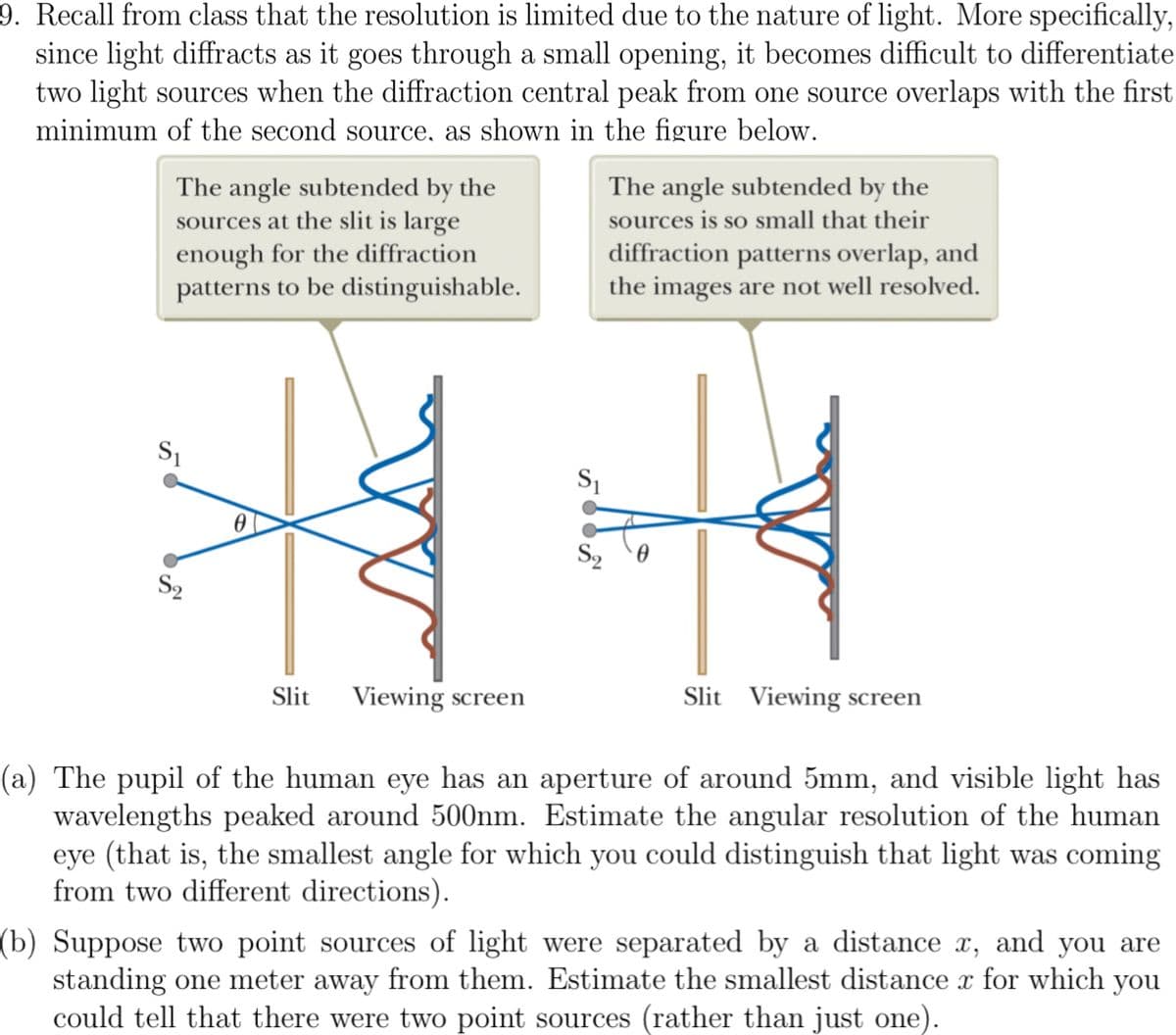Recall from class that the resolution is limited due to the nature of light. More specifically, since light diffracts as it goes through a small opening, it becomes difficult to differentiate two light sources when the diffraction central peak from one source overlaps with the first minimum of the second source, as shown in the figure below. (a) The pupil of the human eye has an aperture of around 5mm, and visible light has wavelengths peaked around 500nm. Estimate the angular resolution of the human eye (that is, the smallest angle for which you could distinguish that light was coming from two different directions). (b) Suppose two point sources of light were separated by a distance x, and you are standing one meter away from them. Estimate the smallest distance x for which you could tell that there were two point sources (rather than just one).
Recall from class that the resolution is limited due to the nature of light. More specifically, since light diffracts as it goes through a small opening, it becomes difficult to differentiate two light sources when the diffraction central peak from one source overlaps with the first minimum of the second source, as shown in the figure below.
(a) The pupil of the human eye has an aperture of around 5mm, and visible light has wavelengths peaked around 500nm. Estimate the angular resolution of the human eye (that is, the smallest angle for which you could distinguish that light was coming from two different directions).
(b) Suppose two point sources of light were separated by a distance x, and you are standing one meter away from them. Estimate the smallest distance x for which you could tell that there were two point sources (rather than just one).

Step by step
Solved in 3 steps







